Mapping the Flow: Journals, Lists, Daily News
February 27 - March 26, 2016
A group show, curated by Tudor Mitroi, featuring works by Ed Blackburn, Vincent Falsetta, Annette Lawrence and Tudor Mitroi.
Essay by Volker Eisele
This exhibition is about the elusiveness of time and our frantic efforts to pin it down. “Time is an illusion” is an often-heard trope and the modern sciences are on the verge of confirming it.
Although the orderly passage of time may be a bedrock assumption of our very existence - this may be true only in Newton’s clockwork universe - neatly divided into past, present and future. After Newton came space-time where time fluctuated relative to the speed of space travel. In the quantum world time exists in the present only. If anyone can imagine this new time reality, it would be akin to a field or realm that is spread out across the universe and interconnects with everything.
Against this backdrop of time as wobbly and soft as one of Dali’s watches, human activity in general and the artists in this exhibition in particular have tried to impose order and define time in line with our intuitive expectations.
We can look to the Mayans of the classical period as one of the great chroniclers of time. They carved magnificent stelae (stone slabs) out of limestone and erected them as monuments to celebrate the beginning and the end of a new time cycle, usually the 20-year “katun” cycle. One side depicted the king in his elaborate vestments and the other side bore hieroglyphic inscriptions chronicling the rituals and exploits associated with the king’s rule.
A number of contemporary artists have dedicated their life’s work to record time and to create an awareness of time – the trajectory of time towards infinity. Two artists stand out: On Kawara and Roman Opalka.
On Kawara is known for his date paintings and postcard series, but his most famous work is the “Million Years Series”. Performed at the Documenta 11 in 2002 (where I was lucky enough to be in attendance) it consists of reading aloud each year of the million years preceding the date of this artwork’s conception and each year of the million years following it into the future. The repetitive recitations of year after year of this immense time scale felt like incantations akin to Gregorian chants or Buddhist prayer mantras, clearly veering into the spiritual realm.
In 1965 Roman Opalka started painting consecutive numbers from 1 to infinity on a daily basis. He painted these numbers in white on a black canvas always of the same size then, over time, he gradually added more white to the background until he was painting white on white. He continued this patterned ritual through 233 canvases over more than forty years. When in his studio he used the canvas, when travelling he drew his numbers with ink on paper. When he died in 2011 his final number was 5,607,249.
Annette Lawrence has deep roots in Houston ever since she was a core fellow at the Glassell School of Art in 1994. Lawrence has always been interested in periodic information relating to cycles, rhythms or phases, but she explores them not following a rigid methodology, yet according to her own intuition and creative agency. She recently finished a “magnum opus” where she created 12 cyclical graphite drawings based on digitized and coded journal notes about her personal life and activities representing the last 25 years.
In his own way of recording, Vince Falsetta created an expansive work that consists of index cards full of notes regarding the composition of his abstract painting such as sketches, formulas or color trials and also intimate musings relating to his life as an artist. His cards are no ordinary index cards as they are crafted from archival paper to assure permanence (learning from the Mayans?). He started in the 1980s and each painting creates from 2 to 10 cards ordering his ideas and concepts like a visual mantra.
In his new work Ed Blackburn, the great visual storyteller, mines mostly political events as seen through media spin for mythic presences. And contemporary politics provide some fascinating reenactments of the ancient tales of power, greed and betrayal. These events are Blackburn’s marker of times, however fleeting and soon to be forgotten.
Tudor Mitroi's most recent drawings start out with no particular formal concept in mind, but as Paul Klee would say he lets his "line go on a walk". An adventurous walk - and soon we see textures and structures emerge, some resembling landscapes or aerial maps. He is very connected to time in the way he marks each container of paint that he mixes and each thin layer of tempera that he applies to the canvas: all are dated.
Great art has always been thought of as transcending ordinary time and to be “eternal and immutable” as Baudelaire wrote. And now the cutting edge sciences postulate time to be a continuous present. Is the confluence of art and science near?
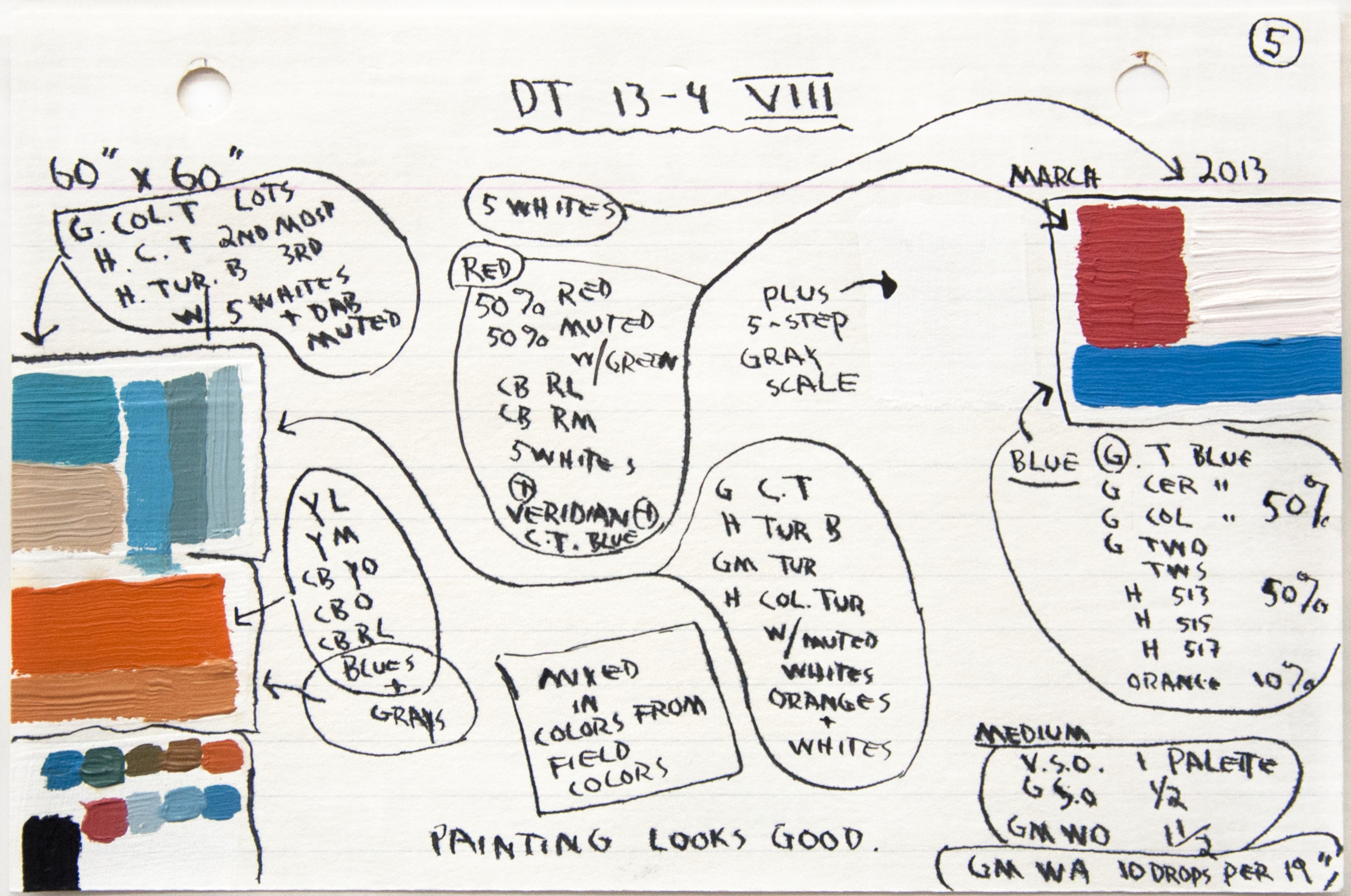
Vincent Falsetta, DT 13-4/5, 2013, India ink and oil paint on screenprinted Strathmore paper
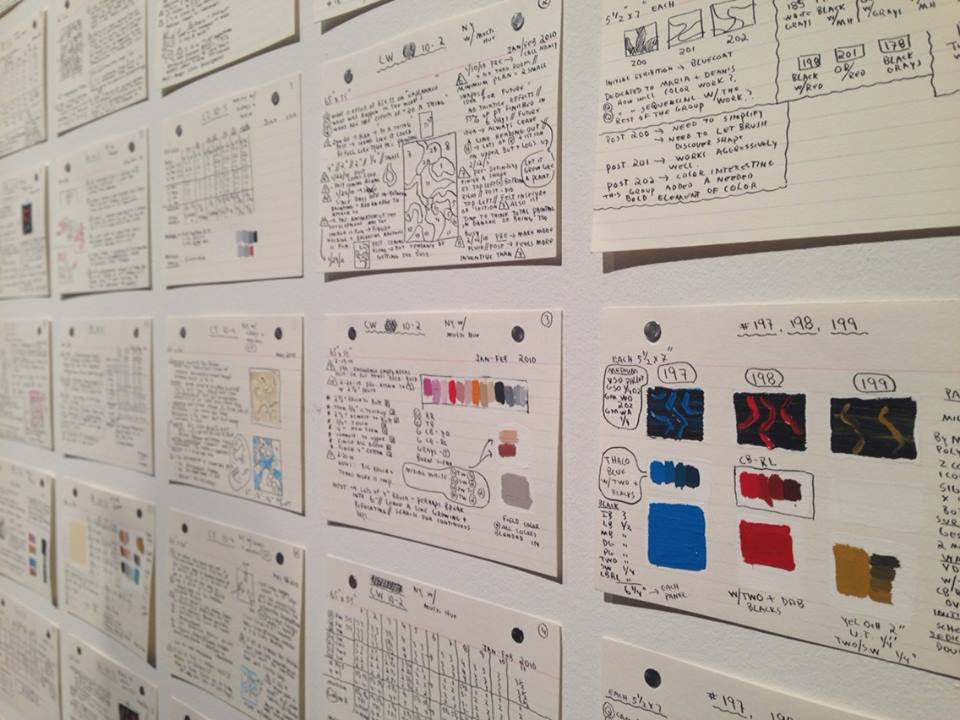
Vincent Falsetta, Index Card Drawing: 2013-2009, installation, India ink, oil paint, and mixed media on printed index cards
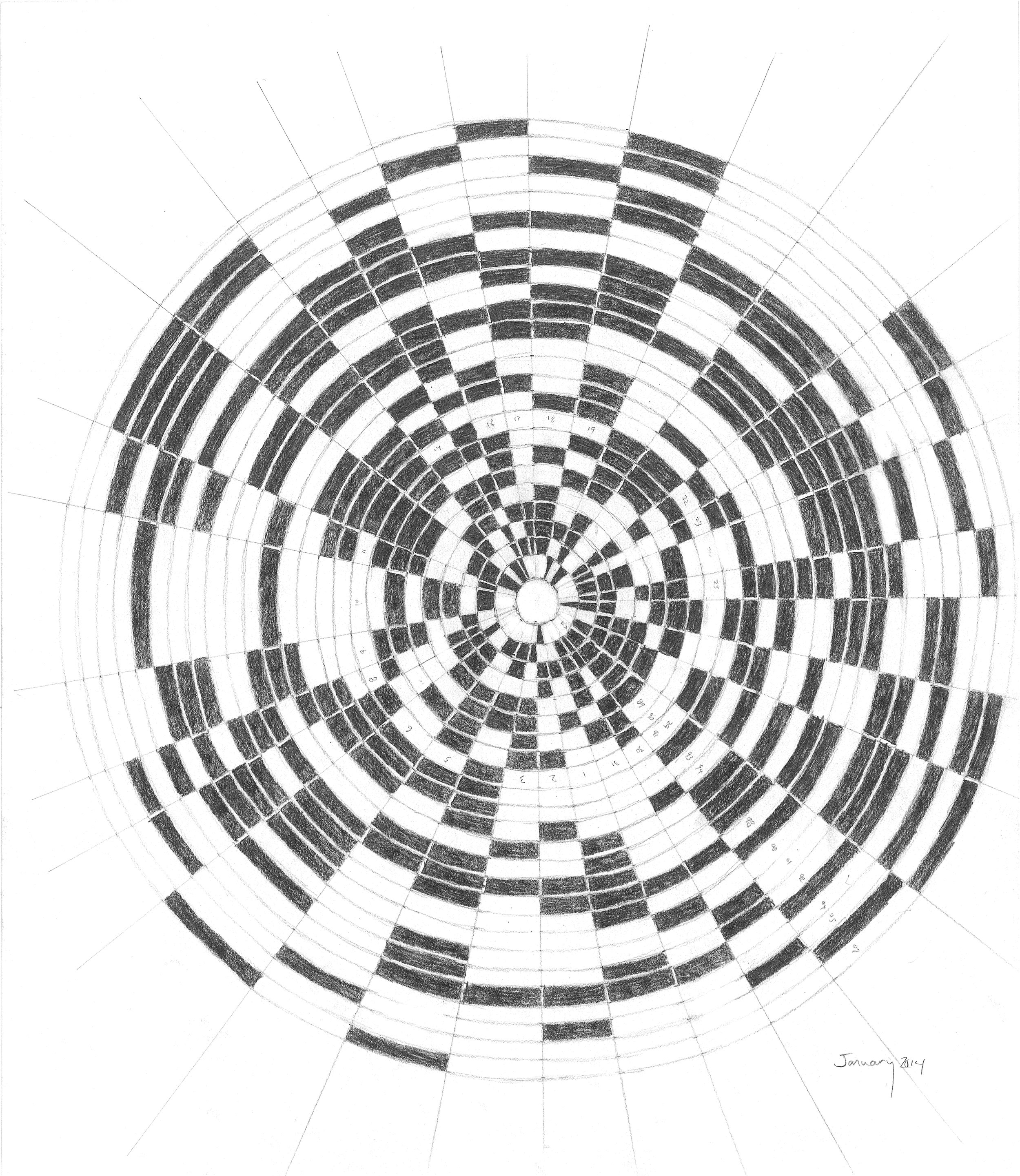
Annette Lawrence, January 2014, 2014, graphite on paper

Annette Lawrence, November 2013, 2013, graphite on paper
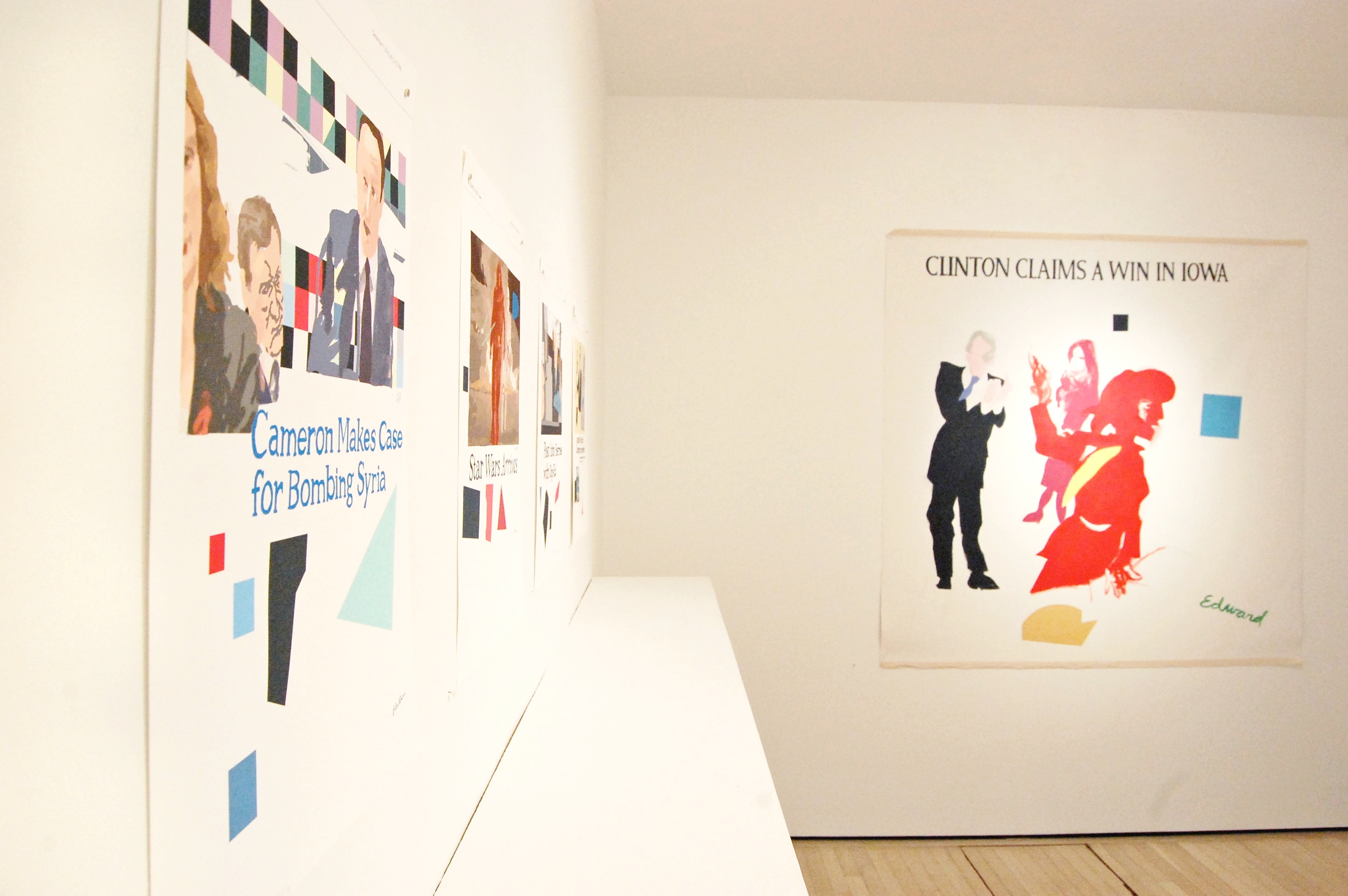
Ed Blackburn, installation shot
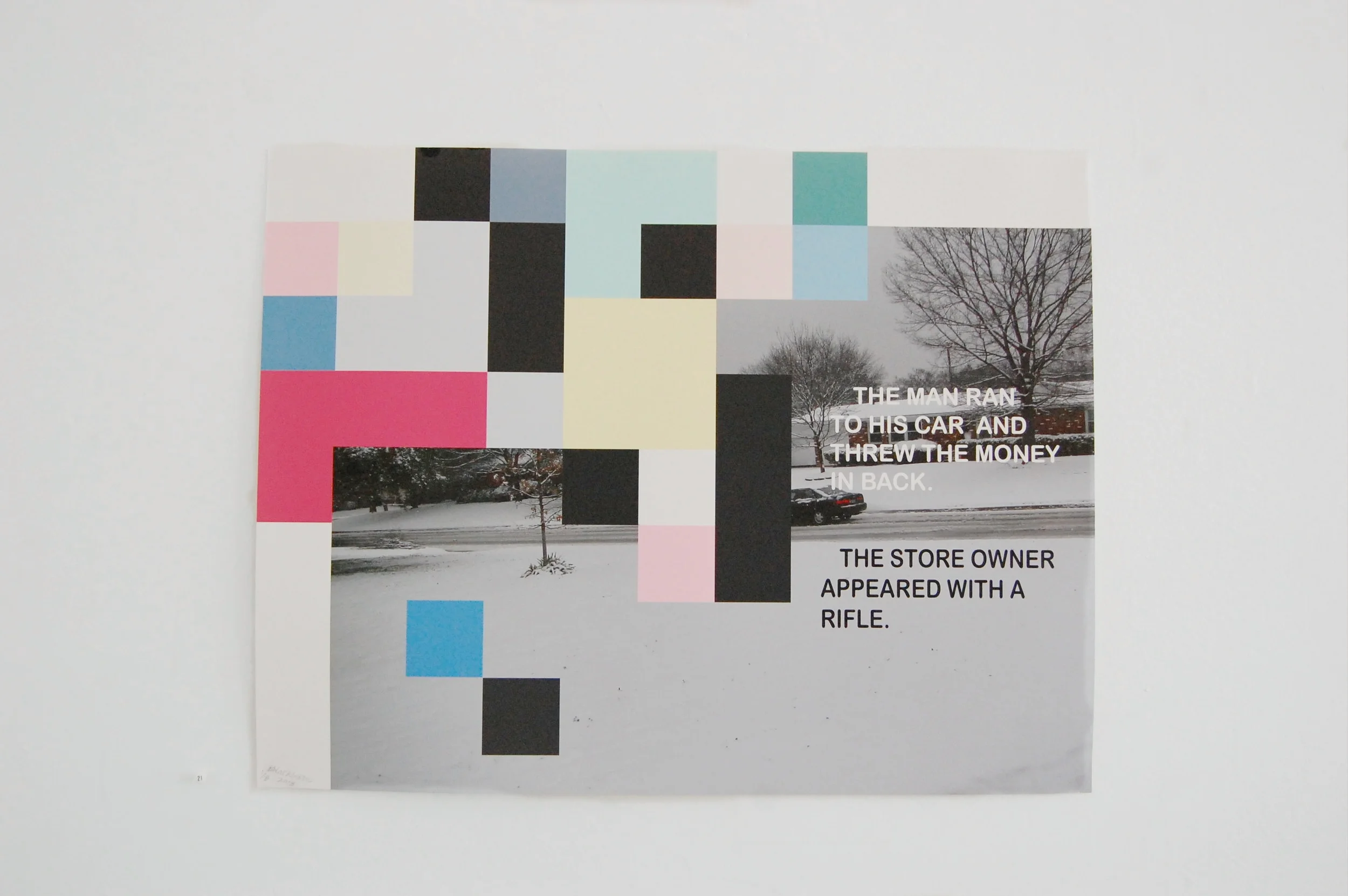
Ed Blackburn, The Man Ran, 2013, archival digital print 1/3
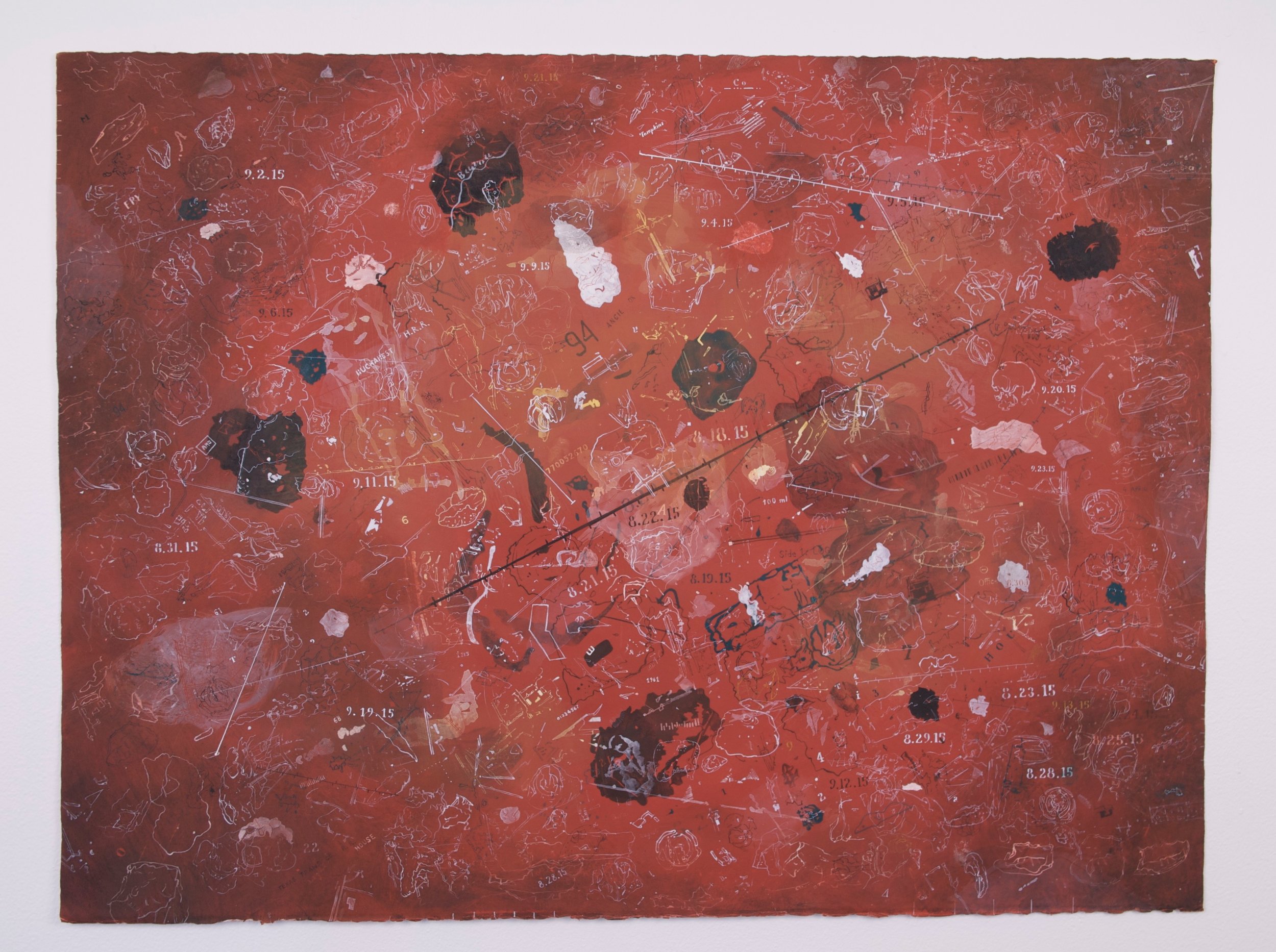
Tudor Mitroi, Red Earth Journal, 10-11.2015, 2015, egg tempera on paper
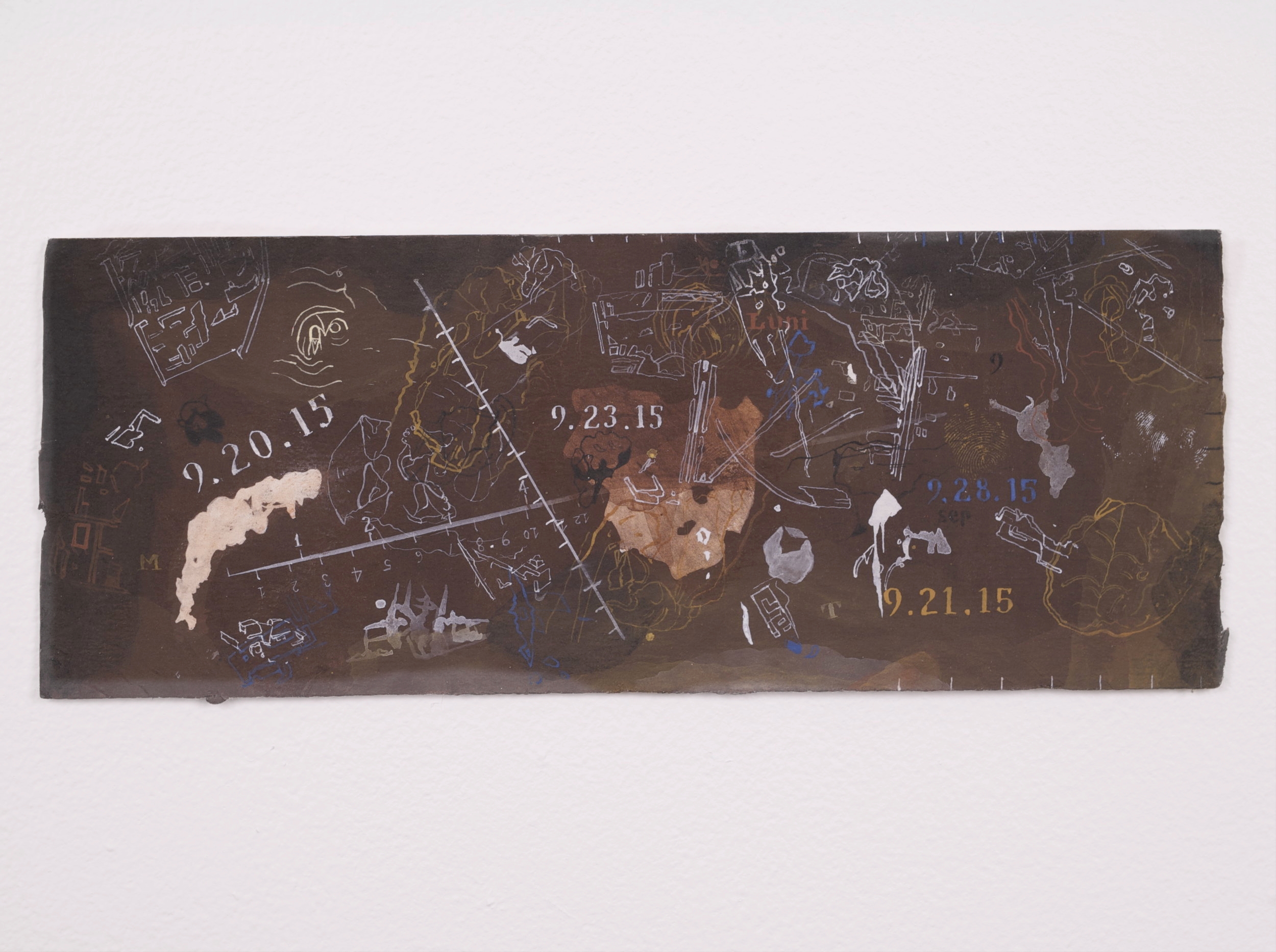
Tudor Mitroi, Umber Journal - 9.2015, 2015, egg tempera on paper

